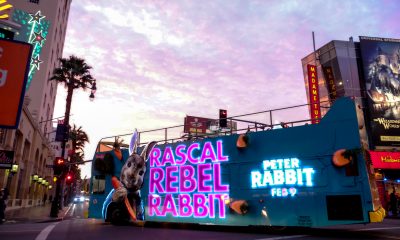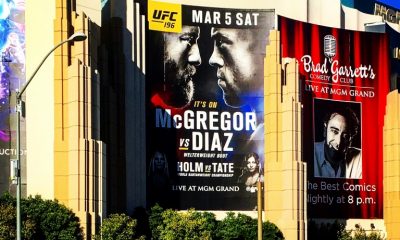Q: Tell us about your day job.
A: I acquire content and disseminate it accordingly. We control all the digital media devices throughout our properties, which entails about 52,000 devices. Those consist of everything from the traditional marketing screen, like an endcap, to interactive touch screens like wayfinders in convention spaces, digital menu boards in front of a restaurant, interactive poker screens, wine menus on iPads, marquees out on the Strip, and all the televisions in the room – we have an IPTV system.
Q: That sounds like a job that should come with a few perks.
A: I got to preview the iPad about two months before it was released, and it was an odd experience. It was two guys in ninja suits who walked in with a silver case and kicked everyone out of the room in Cupertino. That was a great moment.
Vendors will send me things to test run, and right now, I have a device – I can’t name the product or the vendor because it’s in beta testing – that controls everything in my house because we’re testing it out for [hotel] rooms with real-time data. It’s something you can literally slip into your pocket. It’s extremely cool. You hear about home automation, and this is something that is beyond home automation; it tracks my house and movement right now, and it’s smaller than a phone.
Q: What about before you got this job? Tell us something not everyone knows about you.
A: I was a music major in college. And I still have my ’77 Les Paul custom.
Q: And how did you end up making the transition from music major to tech geek?
A: God, who knows? I had a baby and realized I need to grow up and get a real job. The life of a musician is a tough job. I grew up playing violin and piano and stacks and drums. I had bought a Tandy 64K computer from RadioShack, and it was the kind you’d hook a cassette up to and write the code to tape and do an RF modulator to your TV. I was always kind of a mechanical kid and just got into the computer space. I went to go work for Marriott when I realized I had to get a real job. That’s when PBX phone systems were coming in – that’s when PBX actually made money, by the way – and I interviewed with a guy. He brought me into a room with a switch and a 10-foot shelf of books about the system and said, “Know anything about these?” I knew nothing; I started reading books, one thing led to another, and when I went to Disney, I became the head audio guy. I really have been faking it, but I’m a quick study.
Q: What’s on your plate right now?
A: There’s a lot of initiative to reduce print collateral in the room. It’s a trail of cost [keeping it updated]. One thing we’re attacking right now is getting rid of the in-room dining menu and putting it on the [TV] screen. If I’ve got inventory out, or I’m trying to push inventory, it’s an easy hit for us. The most complicated part of it is making the interface as simple as possible.
Advertisement
Q: And what’s the hardest part about your job overall?
A: Herding cats. It really is. Say I sit down in a meeting; we’re going to roll out drink/wine/dessert menus on iPads. There’s a ton of benefit to these things, not only the analytics, but because you can do dynamic pricing, and if there’s not inventory, you can pull that item out.
I have 10 properties on the Las Vegas Strip, so I’m a big proponent of keeping the [signage] the same. I sit down in a room with 10 VPs of food and beverage and we start going through the user interface for a wine menu. I get to red, white, champagne, etc. And some of them want “champagne” and some of them want “sparkling wine” to be the nomenclature. I argued for an hour over the word “bubbles.”
It used to be that I could move at lightning speed with stuff because no one understood the tech. Ever since smartphones and tablets showed up, everyone’s an expert, kind of like how everyone who has a camera thinks they can make movies. It’s one of my biggest challenges.
Q: How do you work with that – everyone having an opinion now?
A: I want to prove as much as I can through data: We put this up and this is what happened; here’s the data to support it. It takes speculation out of the equation. I’m making a big push into partnering up with this [hospitality analytics] group so I can go back to operations and say, look, this is the offer we put out and it either worked or it didn’t work.
The infrastructure alone to get something up and running [is huge], but the advantage is once we roll something out, these things prove themselves really quickly in our environment.
Q: What’s one technological advance you’ve seen recently that you couldn’t have imagined when you started your career?
A: I think Twitter is the greatest form of communication in my lifetime. At MGM Grand, a 5000-room hotel, they have this front desk, this giant video wall. I rebuilt it and we put in three video walls. One of them is a Twitter screen. We gave it its own handle specifically to divert people’s attention because it takes 20 minutes to check in.
Advertisement
The amount of traffic we got from that was unbelievable. I turned it on during New Year’s weekend three years ago. I got a call from the head of hotel ops right away. He said, “Turn the Twitter wall off.” He said he had three people complain about the same front desk attendant saying, “So and so was extremely rude and slow.” I told him, “This is the greatest HR tool you’ve ever had in your life. Take that attendant, turn him around, and show what everyone’s saying about him.”
Q: So, now you’re a true believer.
A: Today, I even have an internal Twitter feed for my departments. I tell everyone that if you send me an email with more than two sentences, I’m not going to read it. I can’t get through it. But this is a great way to see what everyone’s doing. Short, concise messaging, so everyone at my organization can know what everyone else is doing at a glance.
Q: What about print shops as providers for digital signage? Do you believe in that, too?
A: Here’s the problem: Print and video are two completely different worlds. Video is a positive form and print is a negative world of art, because it’s CMYK and you’re extracting it – two completely different mindsets. They’ve been colliding slowly but surely over the years, but someone creating something for print is creating something completely different than someone creating something for digital. If you’re coming from the print world and you’re using serif fonts and stuff that reads great on the screen, you’ll put that up on a marquee, and it doesn’t look the same. As long as [you] have the capacity to realize it’s two different worlds and understand what the format is, what the messaging is, and what you’re trying to get across, it can work, but such people are few and far between.
Q: And what advice do you have, then, for those people?
A: Everyone tries to get fancy, but some things just work. Stick with them.
Use dissolve for your transitions. Early on, it was great because you could change out content very easily. Let’s say I’ve got 10 spots lined up in my playlist. If I dissolve everything from and to black, then I can interchange those spots at any point in time. I can pull any one of them out and create a nice flow.
Also, it’s been proven that things read better on a white background. In the video world, that’s great when your screen’s brand new, but it gets ugly. I like dark backgrounds with light heads, like a yellow that pops out. It blends into the transitions easier, too, because I’m fading into black and it extends the life of my screens because I’m not burning them out.
Advertisement
Q: What are your interests outside of work?
A: I own a Jensen Interceptor convertible. It’s my baby; it’s a ’74. When I was growing up – I grew up in the Newport Beach area – my neighbor had one. The company went out of business due to an oil embargo and a coal strike in the UK. At the time, in 1974, a fully-loaded Corvette would go for $6000 to $7000. A Jensen Interceptor would run you about $25,000. It was like an Aston Martin; it’s an English Roadster. I think it’s one of the 10 greatest automobiles ever built.


 Blue Print1 month ago
Blue Print1 month ago
 Buzz Session1 month ago
Buzz Session1 month ago
 Columns3 days ago
Columns3 days ago
 Beyond Décor: Rachel Nunziata3 weeks ago
Beyond Décor: Rachel Nunziata3 weeks ago
 Press Releases2 months ago
Press Releases2 months ago
 Press Releases1 month ago
Press Releases1 month ago
 Press Releases1 month ago
Press Releases1 month ago
 Press Releases2 months ago
Press Releases2 months ago



















